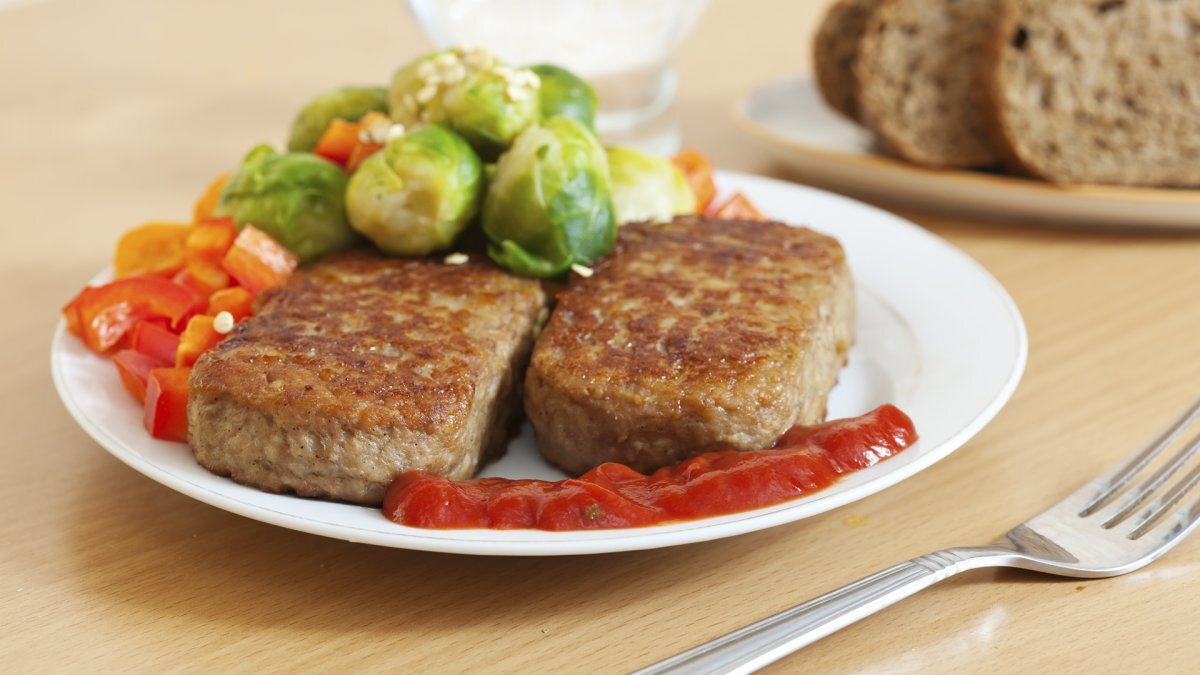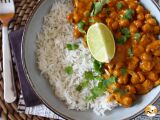From scratch: how to cook seitan to become a staple in your kitchen

Did you know that one of the most protein-rich foods is of vegetable origin and is made from wheat? It's called seitan, and if you didn't like it the first time, maybe you didn't cook it properly: its flavor is very neutral and, without seasoning or good preparation, it can seem tasteless or have an unpleasant texture. But there is a solution, and here we will tell you how.
A simple ingredient with many possibilities
Seitan, sometimes called "vegetable meat", is no modern invention. In fact, it dates back centuries to Buddhist cuisine in East Asia, where it was used as a vegetable alternative in monastic diets. It is made from wheat gluten, the protein part that remains after washing the flour and removing the starch. Although it is still largely unknown to many, it has everything necessary to become a staple in your kitchen if you dare to give it a try. Its texture is surprisingly reminiscent of meat, it cooks in a thousand ways and absorbs flavors as if it were a sponge.
In addition, when it comes to protein, it is not far behind: seitan provides between 24 and 25 grams per 100 grams. A comparison? Eggs, with a reputation as a star protein, are around 13 grams per 100 grams. So yes, this wheat gluten-based preparation has more protein than many foods of animal origin, and that explains why those who follow a plant-based diet have it so present in their dishes. But seitan does not pretend to imitate anything. It just wants you to cook it well.
Made with flour, water and patience, it has found its place in many kitchens because of its firmness, neutral flavor and versatility. The problem is, if you don't know how to treat it, you can have a bad experience... and never try it again.
So why should you care?
Benefits beyond the dish
Although it does not contain all the essential amino acids on its own, seitan is an excellent source of vegetable protein. And when accompanied by legumes, whole grains or nuts, it becomes a very complete combination from a nutritional point of view.
It is also low in fat, has no cholesterol and, if prepared at home or good quality versions are chosen, allows total control over salt and added ingredients. It is ideal for those looking to reduce meat consumption without giving up tasty and satiating dishes.
How to prepare it (and not fail in the attempt)
The key is not to treat it as meat, but not as a neutral product either. Seitan needs love: good broths, spices, marinades, medium heat and enough time to permeate. Because if it is cooked without soul, it tastes like nothing.
Let's start with the base. If you buy ready-made seitan, choose a good quality one, preferably organic and without unnecessary additives. The texture should be firm but not rubbery, and the color should be slightly toasted. Once at home, it is advisable to give it a first taste: a marinade in soy sauce, grated garlic, a little ginger and lemon juice for at least half an hour can change everything.
Another option is to cook it directly in an aromatic broth. Cook the seitan for 10-15 minutes in a mixture of water, soy sauce, bay leaf, onion and spices to taste. This intensifies its flavor and prepares it for any subsequent preparation. Once cooked, you can brown it in a frying pan, cut into thin fillets, until it takes color on the outside. Don't be afraid to add spices, dried herbs or even a pinch of mustard powder: seitan appreciates every layer of flavor.
Stews? Perfect. Woks with vegetables? Also. Baked kebabs with Provençal herbs? Go for it. Seitan acts like a culinary sponge: if you give it flavor, it gives it back with gusto. Just avoid too high temperatures and long cooking times that dry it out.
Time to put on your apron
Integrating seitan into your daily diet can be as simple as it is delicious. Here is a delicious and easy recipe to get you started:
Seitan meatballs with tomato.
Ingredients:
- 200 gr of seitan
- 100 gr of red kidney beans (canned and drained)
- 1 tablespoon of tomato concentrate
- 2 teaspoons of chia seeds (or 1 egg) + 2 tablespoons of water
- 1 spring onion
- 1 tablespoon chopped coriander
- salt
- pepper
- A little bit of oil
- 1 teaspoon of smoked paprika (optional)
- Tomato sauce (to accompany)
Preparation: Mix the chia seeds with 2 tablespoons of water in a glass and let stand 10 minutes at room temperature, until they swell.
Place all the ingredients in a food processor, including the hydrated chia seeds, and grind until a uniform mixture is obtained.
Form balls of about 30 g with your hands.
In a frying pan with a little olive oil (or the fat of your choice), cook the meatballs over medium heat for 10 minutes, turning them carefully so that they brown on all sides without breaking.
When they are browned, add the tomato sauce and let them simmer for another 10 minutes.
Serve with spaghetti or rice and enjoy!
Now, would you give it a chance?
The seitan does not come to replace anything. It comes to add. It has body, accepts sauces with taste and, when cooked with head, it can be part of menus as tasty as balanced.
If the first time it did not convince, perhaps it was not the fault of the seitan, but of the recipe. It is worth trying it again. With good technique and without prejudice, it becomes an ingredient worth repeating.
You may also be interested in:
 Patricia González
Patricia González